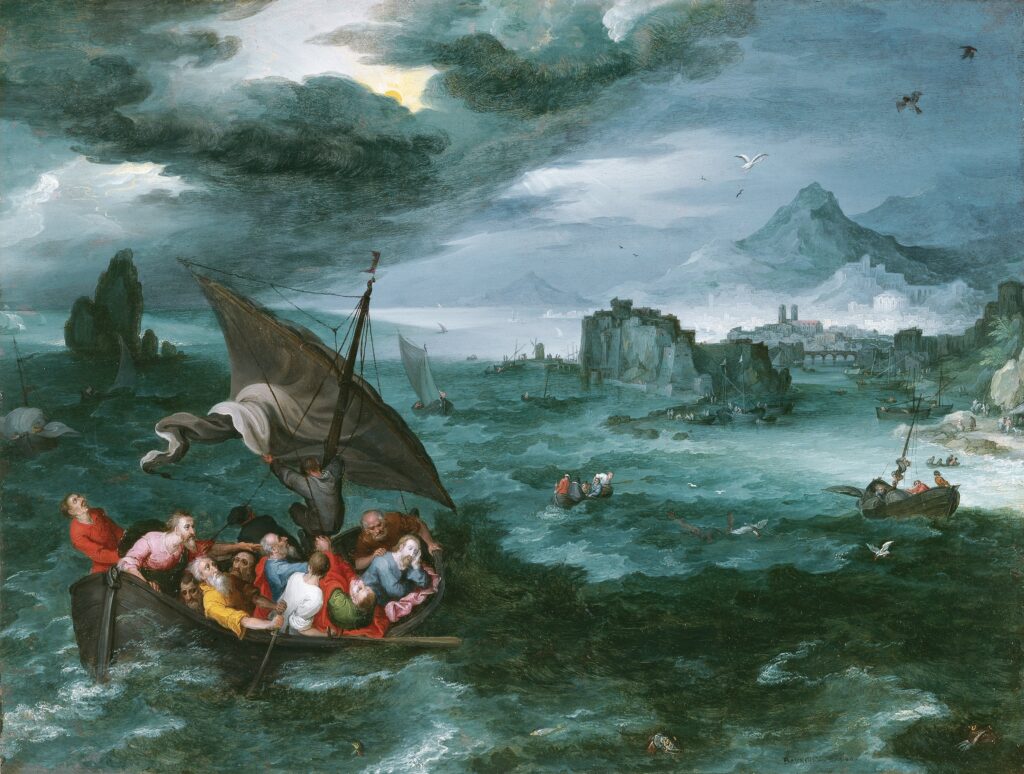
Dark clouds advance across the sky and almost obscure the sun. In their shadow the disciples struggle to prevent their boat from sinking, as the waves come close to filling it. This picture includes several details mentioned in today’s gospel passage. Notice the evening sun and the other boats. Of course, Brueghel includes many details which are not mentioned in Mark’s narrative. Like Brueghel’s “Sermon on the Mount” of 1598, this is a small painting (26.6 X35cm) but the detail is amazing. The artist’s grandmother was a noted miniaturist and an early biographer records that he trained with her. On a computer screen you will see people standing on the parapet of the island fortress and on the city bridge in the background. Brueghel even includes fish in the choppy water near the disciples’ boat. Jan Brueghel painted a number of seascapes, some of them with narrative content from the scriptures. If you look at these online you will see that he repeats certain elements such as the steep rocks behind the disciples’ boat or the bridge. You can see too that he uses the same palate of greens and blues for the seascape and then picks out the main narrative figures in bright colours. Look at how disciples stand out, clad as they are in garments of rose, yellow, red green and blue. It is interesting to look closely at the disciples in the boat and see their various reactions. The one in yellow is trying to row, while others are trying to gain control of the sail. Two of them seem to have cowered down in fear so that only their heads are visible. The faces of the disciples are full of fear and foreboding. But just one of them is trying to wake Jesus up. The boat and the storm take up just one section of the painting. Brueghel includes calmer waters near the land and in the sunlit bay beyond the fortress. In those waters the boats are sailing along without any difficulty. On the shoreline to the right, people can be seen going about their normal daily lives. They seem to be unaware of the drama unfolding out on the water. There is in this an echo of works of his father, Pieter Brueghel, in which the biblical narrative is shown as just a small detail in a busy and largely indifferent world. Of course, the often quoted lines from Auden’s famous poem “Musée des Beaux Arts” come to mind: “About suffering they were never wrong, The Old Masters: how well they understood its human position.”
The Catholic Chaplaincy serves the students and staff of the University of Edinburgh, Edinburgh Napier University and Queen Margaret University.
The Catholic Chaplaincy is also a parish of the Archdiocese of St Andrews and Edinburgh (the Parish of St Albert the Great) and all Catholic students and staff are automatically members of this parish.